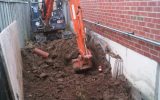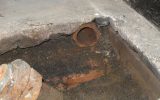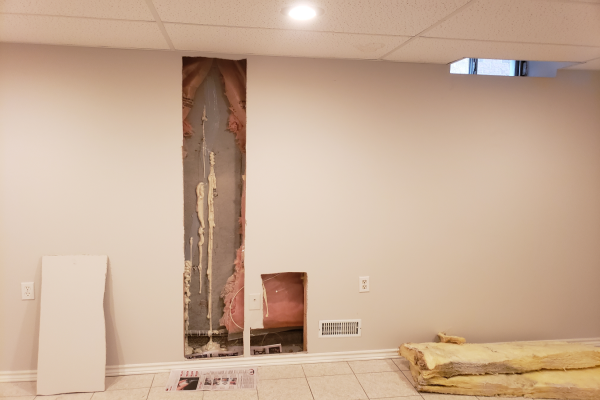Contents
When Foundation Crack Repair is Required
About Ignoring Foundation Cracks
Introduction to foundation crack repair
If you are reading this post, it is likely that you either think you need to have a foundation crack repaired in your own home, or you are considering purchasing a property that has one or more cracks and you want to be better informed about foundation cracks. In both cases, you are on the right page so read on…!
In this post we discuss the aspects of basement crack repair that have the greatest interest to homeowners and prospective home purchasers. Our aim is to provide you with relevant information about foundation cracks in general, the significance of different crack patterns, and to address common homeowner concerns.
Note: this post pertains exclusively to cracks in poured concrete foundations.
Why foundations crack
Foundation cracks in poured concrete foundations are normal and commonplace. Concrete cracks develop for a variety of reasons. Follow these hyperlinks to learn more about why concrete cracks and the available crack repair options and causes of cracks in concrete.
Types of foundation cracks
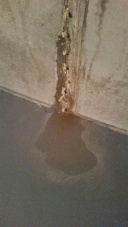
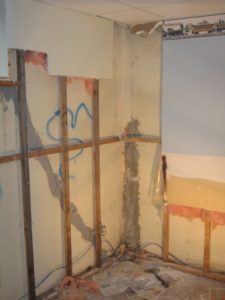
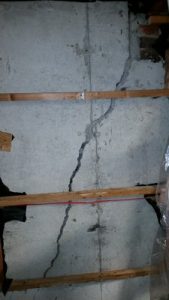
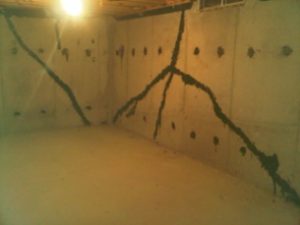
Hairline cracks are the most common type of foundation crack found in homes and concrete structures. Generally, hairline cracks in concrete are the result of plastic shrinkage of the concrete during the curing process. In this instance, there is evidence of sediment on the foundation wall; the visible staining provides confirmation that the crack has been leaking. This foundation crack would be repaired in order to waterproof the basement.
A diagonal settlement crack is relatively common as well. In this case, the footing has settled and the foundation wall with it. This kind of foundation crack usually occurs because the soil beneath the footing has eroded. In most cases the erosion is caused by the introduction of substantial amounts of water originating from a downspout carrying the rain water from the eavestroughs. By redirecting the downspout further away from the house we can prevent ongoing erosion of the soil beneath the footing and halt crack widening. This particular crack depicted was repaired because it was leaking water into the basement.
Wide structural cracks develop due to footing settlement; in the image above, the settlement was quite significant. Such settlement generally occurs because the footing supporting the wall was poured on disturbed or insufficiently compacted soil. This crack would be repaired and stabilized with carbon fiber staples. By repairing the crack, crack growth is arrested, basement leaks are prevented, and ants and other insects no longer have easy access into the basement. Foundation cracks 6mm wide or greater may be covered for 7 years under Tarion’s structural warranty.
Foundation failure cracking is not normally seen. In the example above, we can observe abnormal cracking patterns and excessive foundation cracking. This is a picture of a serious situation therefore, if you are contemplating buying a home with similar foundation cracking, you may wish to take a pass on buying the home as the cost of foundation repair will be considerable. For this particular home, the foundation repair solution was the pouring of a second foundation to support the weight of the home.
When foundation crack repair is mandatory
There are times when foundation crack repair is mandatory unless, of course, you are not concerned about basement leaks or the condition of your foundation. While there are a number of health related reasons to repair foundation cracks causing basement leaks, it is our view that there are 4 situations where foundation crack repair is truly mandatory:
- When foundation cracks are leaking or have leaked;
- Prior to selling your home;
- When you have wide foundation cracks (>3mm); and
- When the cracks are near to horizontal.
If you have a leaking foundation crack there are several reasons to have it repaired:
- A wet or damp basement reduces your living space;
- Water that has entered your basement from a leaking foundation crack can ruin personal effects stored in your basement, damage your furnace and rot framed walls; and
- Basement leaks commonly result in mold growth, which can adversely affect your family’s health.
There are plenty of sound reasons to repair foundation cracks before listing your home on the market. Click on this hyperlink to read more about why repairing foundation cracks is advisable prior to selling your home.
Although having a relatively wide foundation crack does not mean your house will collapse, there are a few reasons to have them repaired:
- A proper crack repair prevents the crack from further widening (wide foundation cracks tend to result in cracks in the brick veneer supported by the foundation);
- Basement leaks are prevented; and
- Insects are prevented from entering your basement through cracks.
While relatively rare, horizontal cracks in poured concrete foundations are a warning sign. This crack pattern is of concern because horizontal cracks form due to soil pressure on the walls. The pressure on the foundation is so great that the part of the foundation wall beneath the crack is actually being pushed inwards.
Ignoring foundation cracks
While it is not mandatory that you repair every single foundation crack in your basement, you may, nonetheless, choose to have them professionally repaired.
Ignoring a leaking crack is always a bad idea because foundation cracks in which water is present is damaging for your foundation. As concrete is porous, it becomes saturated which, over the long term, causes the concrete to revert to its original “water & sand” state thus weakening your foundation.
Interested in learning more? Check out some of the other pages on this site:


